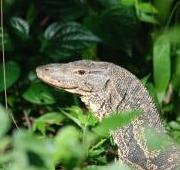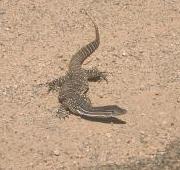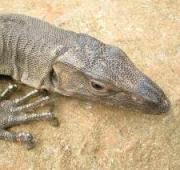 Monitor Lizards are large reptiles found in Africa and all across Asia, including the surrounding seas. The monitor lizard is mainly found in jungle areas although some species of monitor lizard are water-bound.
Monitor Lizards are large reptiles found in Africa and all across Asia, including the surrounding seas. The monitor lizard is mainly found in jungle areas although some species of monitor lizard are water-bound. Some species of monitor lizard are thought to carry a fairly weak venom, for example, the komodo dragon which is the largest of the species. The komodo dragon is native to the small Indonesian island that it is named after and is the largest species of lizard in the world.
Some species of monitor lizard are thought to carry a fairly weak venom, for example, the komodo dragon which is the largest of the species. The komodo dragon is native to the small Indonesian island that it is named after and is the largest species of lizard in the world.


Most species of monitor lizard have a predominantly carnivorous diet, eating eggs, smaller reptiles, fish, birds and small mammals. Some species of monitor lizard also eat fruit and vegetation depending on where they live.
Female monitor lizards bury their eggs in holes or hollow tree stumps that the female monitor lizard then covers with dirt in order to protect her eggs. Monitor lizards can lay up to 30 eggs at a time, although many monitor lizards lay less, and only a lucky few of the monitor lizard babies tend to survive.
Monitor lizards are thought to be fairly intelligent animals, with some people claiming that monitor lizards are able to recognize numbers up to six, therefore meaning that monitor lizards are able to count! Monitor lizards mainly use their intelligence in the wild by surveying areas for oncoming danger and for hunting their prey.

